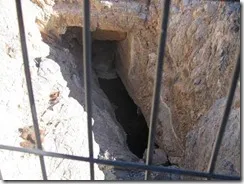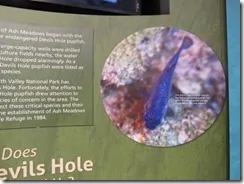Have you ever heard of lush oases hidden in the arid desert? Join “Du Lịch Khắp Thế Giới” (Travel Around The World) to explore Ash Meadows National Wildlife Refuge, a unique sanctuary just outside Death Valley, where life springs from miraculous geothermal springs. A visit to Ash Meadows is not just a journey of natural discovery, but also an opportunity to learn about the history, culture, and biodiversity conservation efforts of this special land.
Introducing Ash Meadows National Wildlife Refuge
Ash Meadows National Wildlife Refuge, a hidden gem in the Nevada desert, is a must-visit destination for those who love exploring nature and learning about unique ecosystems. It’s not only a verdant oasis in a barren landscape but also home to many rare species of flora and fauna, especially the endangered pupfish.
Ash Meadows is managed by the U.S. Fish and Wildlife Service, with the goal of conserving and restoring native species and their habitats. The refuge covers over 9,300 hectares (23,000 acres), including springs, marshes, wetlands, and arid desert. This diversity of habitats has created a rich and unique ecosystem, attracting visitors from all over the world.
Journey to Ash Meadows: Visiting the Amargosa Opera House
Before immersing yourself in the unspoiled beauty of Ash Meadows, you can visit another unique location nearby: the Amargosa Opera House.
This opera house, located in Death Valley Junction, was created by artist Marta Becket. She was a talented dancer who once performed on Broadway, but later chose to leave the spotlight and come to this desolate area. She decorated the theater herself, painting unique murals and performing nightly, even when there was no audience.
The Amargosa Opera House is a testament to the undying spirit of art and a deep connection to the Death Valley region.
Exploring Devils Hole: Mystery Beneath the Earth
One of the most distinctive features of Ash Meadows is Devils Hole, a geothermal pool located deep within a limestone cave. The water temperature here remains constant at 33°C (91°F).

Devils Hole is not only a geological wonder, but also the habitat of the critically endangered Devils Hole pupfish (Cyprinodon diabolis). This species has lived here for tens of thousands of years, adapting to the harsh environment and becoming a symbol of survival.
The Legend of Devils Hole
The name “Devils Hole” likely originates from the stories of the native Paiute people, who regarded water as a source of life and revered deep caves. They believed these places were the dwellings of deities, both benevolent and malevolent.
Unsolved Mysteries
The true depth of Devils Hole remains a mystery. Explorers have tried to dive to the bottom of the cave, but without success. Some believe that the hole connects to a vast underground water system, possibly even reaching the ocean.
Desert Tsunamis
Another strange phenomenon at Devils Hole is the appearance of small waves after earthquakes in distant locations. These “desert tsunamis” are evidence of the underground connection between Devils Hole and other regions around the world.
Observing Pupfish: The “Jewels” of Ash Meadows
Pupfish are small but incredibly special fish, the precious “jewels” of Ash Meadows. This species has an amazing ability to adapt, surviving in hot, oxygen-poor water.

The Devils Hole pupfish is one of the rarest fish in the world. Their numbers have declined sharply in recent years due to habitat loss and other factors.
Pupfish Conservation Efforts
Protecting pupfish is a top priority for Ash Meadows National Wildlife Refuge. Scientists and conservationists have been working to restore pupfish populations and protect their habitat.
Ash Meadows National Wildlife Refuge Visitor Center: Learn About the Unique Ecosystem
The Ash Meadows National Wildlife Refuge Visitor Center is the ideal starting point for your visit. Here, you can learn about the history, geology, ecosystem, and the flora and fauna of the refuge.

Crystal Spring: Oasis in the Desert
One of the highlights of Ash Meadows is Crystal Spring, a clear spring flowing through the arid desert.

The water of Crystal Spring originates from ancient underground aquifers, stored beneath the earth for thousands of years.
Biodiversity of Ash Meadows
Ash Meadows is home to over 25 native plant and animal species, many of which are found nowhere else in the world.

Conclusion
A tour of Ash Meadows National Wildlife Refuge is a unique and memorable experience. You will explore lush oases in the desert, learn about the history and culture of the region, and see rare species of flora and fauna. Come to Ash Meadows to discover the unspoiled beauty and wonder of nature!